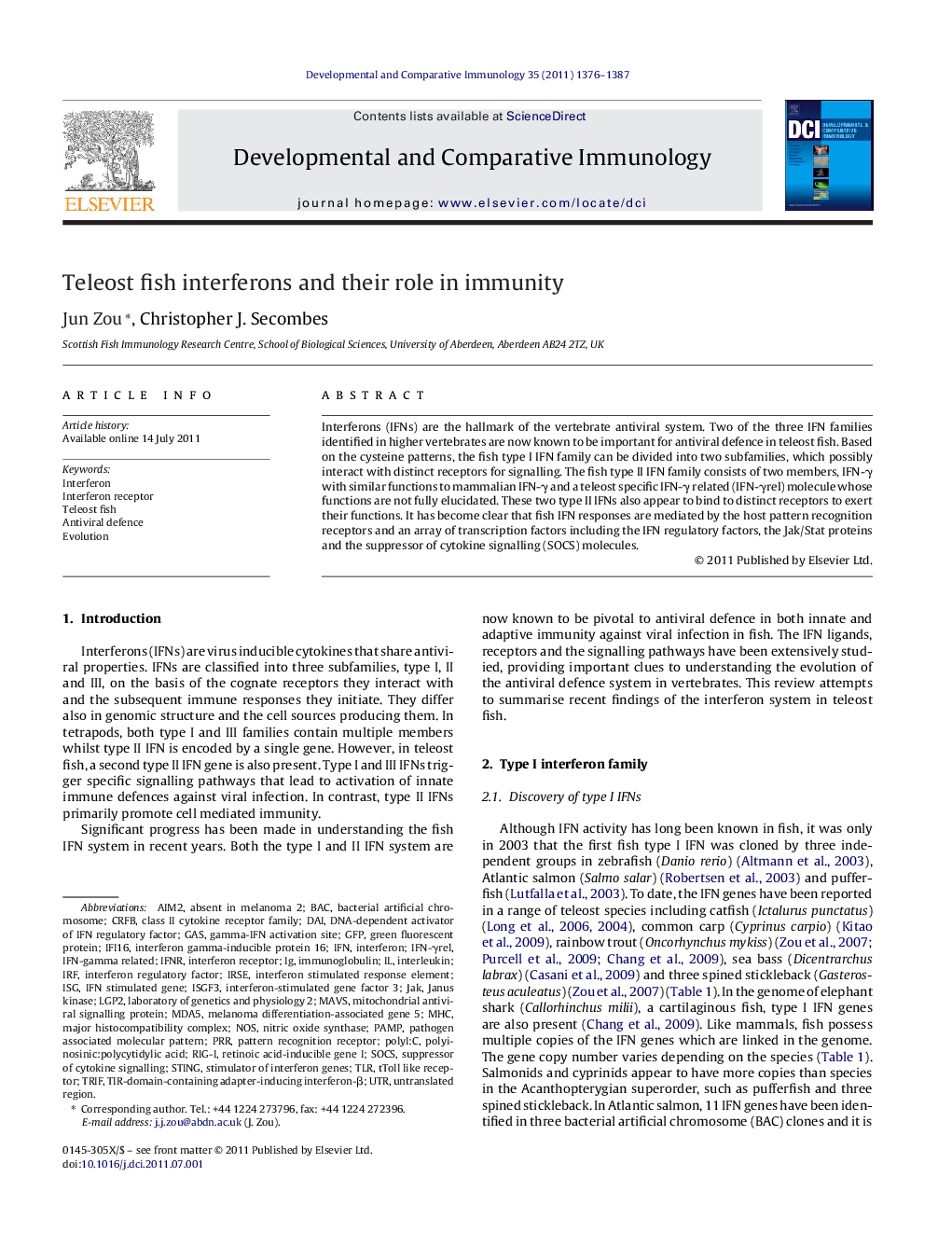| Article ID | Journal | Published Year | Pages | File Type |
|---|---|---|---|---|
| 2429686 | Developmental & Comparative Immunology | 2011 | 12 Pages |
Interferons (IFNs) are the hallmark of the vertebrate antiviral system. Two of the three IFN families identified in higher vertebrates are now known to be important for antiviral defence in teleost fish. Based on the cysteine patterns, the fish type I IFN family can be divided into two subfamilies, which possibly interact with distinct receptors for signalling. The fish type II IFN family consists of two members, IFN-γ with similar functions to mammalian IFN-γ and a teleost specific IFN-γ related (IFN-γrel) molecule whose functions are not fully elucidated. These two type II IFNs also appear to bind to distinct receptors to exert their functions. It has become clear that fish IFN responses are mediated by the host pattern recognition receptors and an array of transcription factors including the IFN regulatory factors, the Jak/Stat proteins and the suppressor of cytokine signalling (SOCS) molecules.
